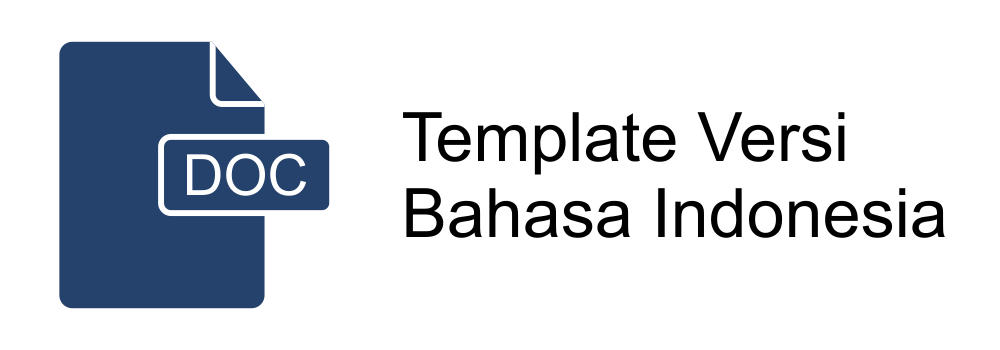The Word Sponsor in the Investigation Report of Human Trafficking Cases: a Corpus-Based Meaning Study
Abstract
Keywords
Full Text:
PDFReferences
Akbar, A., & Razak, N. K. (2023). Conversational Implicature pada Berita Acara Pemeriksaan Kasus Dugaan Pembunuhan Berencana di Makassar Tinjauan Linguistik Forensik. Lingue: Jurnal Bahasa, Budaya, dan Sastra, 5(1), 41–51. https://doi.org/10.33477/lingue.v5i1.5335
Alfitra, S. H. (2014). Modus Operandi Pidana Khusus di Luar KUHP: korupsi, money laundering, & trafficking. Raih Asa Sukses.
Anthony, L. (2013). A critical look at software tools in corpus linguistics. Linguistic Research, 30(2). https://doi.org/10.17250/khisli.30.2.201308.001
Ardila, J. A. G. (2011). Meaning in Language. An Introduction to Semantics and Pragmatics: Alan Cruse, Oxford University Press, Oxford, 2011, 497 pp.,£ 26.99 (paperback), ISBN 978-0-19-955946-6. Elsevier.
Bednarek, M., & Caple, H. (2017). The discourse of news values: How news organizations create newsworthiness. Oxford University Press. https://doi.org/10.1093/acprof:oso/9780190653934.001.0001
Campbell, L. (2013). Historical linguistics. Edinburgh University Press.
Cheng, W. (2011). Exploring corpus linguistics: Language in action. Routledge. https://doi.org/10.4324/9780203802632
Chouliaraki, L., & Fairclough, N. (2021). Discourse in late modernity: Rethinking critical discourse analysis. Edinburgh University Press. https://doi.org/10.1515/9780748610839
Coulthard, M., Johnson, A., & Wright, D. (2016). An introduction to forensic linguistics: Language in evidence. Routledge. https://doi.org/10.4324/9781315630311
Dari, M. W., Syahrani, A., & Asfar, D. A. (2024). Collocations of Pria, Lelaki, and Jantan as Representations of Masculinity in Indonesia. GEMA Online Journal of Language Studies, 24(4). https://doi.org/10.17576/gema-2024-2404-12
Dijk van TA, D. (2014). Knowledge: A Sociocognitive Approach. Cambridge: Cambridge University Press.
Eriyanto, D. (2022). Analisis Wacana Kritis Berbasis Korpus. Bandung: PT Remaja Rosdakarya.
Garibyan, A. (2022). Processing collocations cross-linguistically: a psycholinguistic and neurolinguistic study. Friedrich-Alexander-Universitaet Erlangen-Nuernberg (Germany).
Garmendia, J. (2018). Irony. Cambridge University Press. https://doi.org/10.1017/9781316136218
Georgakopoulou, A., & Spilioti, T. (2016). The Routledge handbook of language and digital communication. Routledge London. https://doi.org/10.4324/9781315694344
Gries, S. T., Slocum, B. G., & Tobia, K. (2024). Corpus-linguistic approaches to lexical statutory meaning: Extensionalist vs. intensionalist approaches. Applied Corpus Linguistics, 4(1), 100079. https://doi.org/10.1016/j.acorp.2023.100079
Harahap, A. I., Cristy, S. N., Efendi, S. S., & Sinar, T. S. (2024). Applying Antconc in Regex Search on BBC News Text. Linguistik Terjemahan Sastra (LINGTERSA), 5(1), 38–47. https://doi.org/10.32734/lingtersa.v5i1.12364
Hart, C. (2022). Critical discourse analysis. In Introducing Linguistics (pp. 311–325). Routledge. https://doi.org/10.4324/9781003045571-19
Hasan, H. K. (2023). Semantic Theories, Levels of meanings, and Types of meaning. Republic of Iraq Ministry of Higher Education and Scientific Research Universiry of Thi-Qar College of Education for Humanities Department of English.
Jewkes, Y. (2015). Media and crime. Sage.
Kurniasih, U., Suseno, A. T., & Muna, N. (n.d.). Representasi Berita Ekonomi pada Situs DPR RI: Kajian Wacana Korpus Linguistik. JLA (Jurnal Lingua Applicata), 7(1), 14–24. https://doi.org/10.22146/jla.87635
Laura, A.-J. (2014). Irony as inferred contradiction. Russian Journal of Linguistics, 4, 140–153.
McIntyre, D. (2018). Irony and semantic prosody revisited. In The Pragmatics of Irony and Banter (pp. 81–99). John Benjamins Publishing Company. https://doi.org/10.1075/lal.30.05mci
Motschenbacher, H. (2020). Corpus linguistic onomastics: A plea for a corpus-based investigation of names. Names, 68(2), 88–103. https://doi.org/10.1080/00277738.2020.1731240
Nabillah, N. (2024). Analisis Modalitas dalam Berita Acara Pemeriksaan Saksi kasus Laka Lantas: Pendekatan Linguistik Forensik. Repository Universitas Pendidikan Indonesia
Nasser, M. A. (2022). A corpus-based study of reviewers’ usage of speech acts. Cogent Arts & Humanities, 9(1), 2125155.
https://doi.org/10.1080/23311983.2022.2125155
Parji, R. P., & Prihandini, A. (2023). Makna denotatif dan konotatif empat kutipan milik sage pada permainan valorant: kajian semantik. Mahadaya: Jurnal Bahasa, Sastra, dan Budaya, 3(1), 85–94. https://doi.org/10.34010/mhd.v3i1.7617
Phoocharoensil, S. (2021). Semantic prosody and collocation: A corpus study of the near-synonyms persist and persevere. Eurasian Journal of Applied Linguistics, 7(1), 240–258. https://doi.org/10.32601/ejal.911269
Saeed, J. I. (2015). Semantics (Vol. 25). John Wiley & Sons.
Taha, M., Iswary, E., & Asad, D. (2022). Tindak tutur ilokusi deklaratif, asertif, komisif, dan direktif dalam berita acara pemeriksaan (BAP) Polda Maluku Utara. Madah: Jurnal Bahasa dan Sastra, 13(1). https://doi.org/10.31503/madah.v13i1.437
Wodak, R., & Meyer, M. (2015). Methods of critical discourse studies. sage.
Ymaniyar, N. A. (2025). Kolokasi penggunaan kata kerja bantu “bisa”,“dapat”, dan “boleh”: Kajian linguistik korpus. Semiotika, 26(1), 1–14.
Zhang, L. (2022). Studi berbasis korpus: perbandingan kolokasi dan prosodi Semantik sinonim bahasa indonesia “menyebabkan” dan “mengakibatkan.” Mabasan, 16(1), 153–176. https://doi.org/10.26499/mab.v16i1.517
Zhang, Y., Han, K., Worth, R., & Liu, Z. (2020). Connecting concepts in the brain by mapping cortical representations of semantic relations. Nature Communications, 11(1), 1877. https://doi.org/10.1038/s41467-020-15804-w
DOI: https://doi.org/10.26499/surbet.v20i1.30802
Refbacks
- There are currently no refbacks.

This work is licensed under a Creative Commons Attribution-NonCommercial-ShareAlike 4.0 International License.
This work is licensed under a Creative Commons Attribution-NonCommercial-ShareAlike 4.0 International License.











